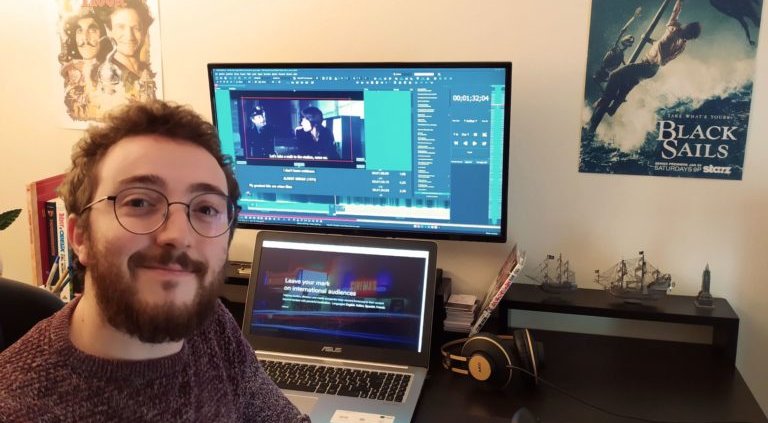Filmmakers are missing a trick when they don’t use Subtitles
Subtitling is an art form – it combines linguistic skill, technical expertise and creativity
For a film to be a global hit, high quality subtitles are key and a worthwhile investment.
Production managers, studios, directors, and producers benefit from being aware of how significant subtitling is in a competitive global market, and that it adds substantial value to the final product.
Subtitling is a vital linguistic, creative, and technical skill that can provide lucrative opportunities for film and television businesses. It includes disciplines such as translation and interpretation and involves adaptation and localization techniques that help the meaning to resonate with multilingual audiences across the globe.
A few leading experts in subtitling within the film industry and from major universities across Europe shared their insights with the SubtitleNEXT team recently into why subtitling needs to be considered at the start of production and also what it entails in terms of what the differences are between interpreting and translating and how localization comes in.
This week we feature Ivanka Vassileva, who is a dynamic Language Services Professional and also the CEO of systems integration firm PBT EU, resellers of the SubtitleNEXT system designed and developed by Profuz Digital.
Ivanka notes, “Filmmakers are missing a trick if they don’t consider subtitles at the start of the process.” Ivanka Vassileva, CEO of PBT EU states. “By using subtitles that appeal to a wider global audience, they can boost revenues and provide content creators with the potential to reach a vast global audience.”
Running through a brief overview of what industry-leading experts told us recently on this topic, we heard from Lukasz Dutka, a member of AVT Lab, a research group on audio-visual translation and a trainer in subtitling at the University of Warsaw, Poland. He said that “with eye-tracking technology you can study how people view movies and how subtitles affect the viewing process.”
Dr Vasilis Manousakis, who is the Literature, Literary and Audiovisual Translation instructor at Hellenic American College in Athens, and a skilled successful subtitling artist in his own right, having subtitled and translated a broad range of genres, series and films produced by Disney, Universal Pictures, Warner Bros. and Netflix, including “Lost”, “The Good Place”, “Star Wars” and “Game of Thrones”, told us that subtitling is an integral part of any movie that wants to be internationally successful and is a link in the chain of the production of any movie.
Riccardo Mimmi, who is an accomplished professional film translator and subtitler in Italy has been translating and subtitling hundreds of high profile movies, TV series, and documentaries from major Hollywood studios, broadcast networks and online streaming companies such as Netflix and Amazon over the course of his entire career, such as ‘The Man in the High Castle’, ‘Vikings’, ‘The Americans’, ‘The Office’ and others, points out, “Something apparently as simple as a different cut of the film could result in a different translation choice due to time, colour, sound, or other factors. Part of a subtitler’s job can be regarded as that of a film dialogue author. A paramount goal is to maintain the meaning and especially the impact of the original version while also keeping the dialogue interesting, entertaining, and suited to the target audience, without losing each character’s personality. A plain translation might in fact be faithful to the original but also very boring to the viewers, hence ruining the experience. Adding the technical constraints of subtitles to the equation, the translation might deviate from the most obvious or straightforward solution, so to that end, collaboration and communication with the filmmakers at all stages should be encouraged, ensuring their creative intent and characterization is fulfilled.”
Subtitling Team Leader at IT Pros Monica Paolillo recently wrote an article titled “Why subtitling can be considered an art form” where she outlined that subtitling is not just about studying languages or speaking multiple languages fluently. In subtitling, she says, you don’t just transfer ideas and words to make them accessible to the reader in the target language. She insists that “Subtitlers carry a message and stand in-between cultural settings, straddling the languages they work with the way simultaneous interpreters do. They have a profound knowledge of idioms and slang both in the source and target languages.”
AV translator and subtitler Valentina Stagnaro told us she works like a surgeon while picking up words and making them fit into character limitations.
AVT and transcreation professional Serban Dudau with a wide-reaching portfolio including high-end titles such as `The Crown`, `Black Mirror`, `Mad Men` and many others adds that subtitling in its basic form should ideally be as close to invisible as possible, in that the text which interprets the media for the audience must be so well blended into the experience that nothing important on-screen is missed and the viewer never has to feel as if they are reading instead of watching.
Independent writer and AV translator Dorthe Pedersen declares that you need to have good interpretation skills and be able to make a translation that fits in context. You also have to be able to time subtitles and make them readable, and feels that sadly, subtitling often seems like an afterthought.
Elena Konotopova who is the CFO of RuFilms LLC (School of Audiovisual Translation) and President of The Association of translators and editors of subtitles “Eurasian subtitlers’ league” (ESL) reveals that the success of Russian cartoons and TV series worldwide was based on skilful localization that was incorporated into the production process from the very start saying, “It wasn’t just a post-production issue. Subtitling as a part of the localization bundle was integrated into the business planning of TV and cartoon producers., and localization really encountered the production process.”
Professor Agnieszka Szarkowska of the Institute of Applied Linguistics at the University of Warsaw stated, “Subtitling is crucial for the international success of a film, TV series or show. And yet, it’s surprising how little attention filmmakers typically allocate to subtitling, which – from their perspective – is probably merely an afterthought, a minor part of the post-production process. shatters their suspension of disbelief, annoys them, makes them switch off and feel disappointed with the film as a whole.”
To round up, Ivanka Vassileva concludes with these words, “Reflecting on all the excellent contributions received concerning this important topic, Monica Paolillo’s words also resonate with the creative industries such as the film industry with production and post-production, in that subtitling is considered an art form. Subtitling is an art in my view too, because it not only requires linguistic skill or language knowledge, but it also demands technical expertise and creativity with regards to adapting and transferring the original message in the best possible way for the viewer.
Our SubtitleNEXT subtitling platform offers subtitling professionals many toolsets that can enhance their work, one example being the “live dictation” function which can be used in live subtitling workflows in order to caption news and events in real time which is quite an exciting new development. There is a lot more we have released since then and more to come on the horizon for 2021. Visit our website www.SubtitleNEXT.com for further updates on our latest news. We always have an exciting new feature to try out and we welcome you to join the SubtitleNEXT club!”
More about Ivanka Vassileva, CEO of PBT EU, please visit www.pbteu.com
Note: We conclude this series of blogs in early March, so keep an eye out for final Blog 11 where the team hears from CTO Kamen Ferdinandov, creator and developer of the popular software system SubtitleNEXT. Kamen is always busy working on the next feature, and he will provide insight on this timely topic, which has become more relevant than ever in the current pandemic.
With more people having to adapt to working remotely and relying on accessible tools online, and in need of staying connected globally at the same time, SubtitleNEXT’s subtitling capabilities play a key role in many media facilities including film productions. By leading content creators to provide multilingual content, subtitling as a skill plays a major role in helping companies navigate and change how they work for the better.
SubtitleNEXT welcomes further comments from professional subtitlers out there who would like to contribute to this discussion, as we need to keep the topic going and keep the industry engaged. Please send us your words of wisdom and we will feature them in a new series on this topic in the future. Email info@subtitleNEXT.com











